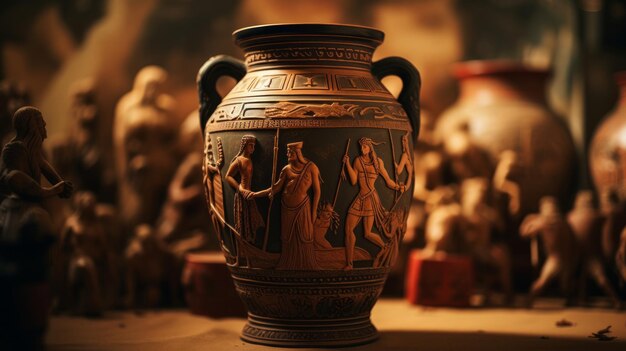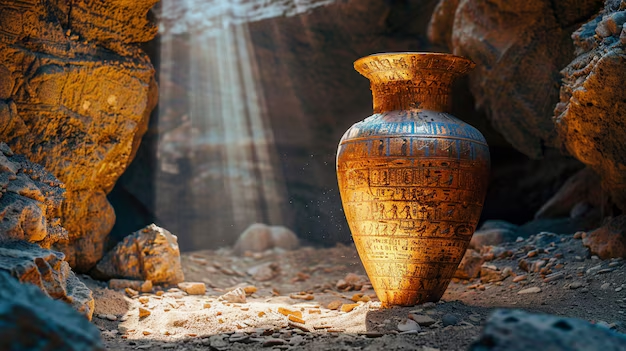Definition and Significance
Ancient Artz” alludes to the different scope of imaginative articulations and manifestations created by early civilizations across the world. These show-stoppers incorporate artworks, figures, design, earthenware, materials, from there, the sky is the limit. They give priceless bits of knowledge into the social, strict, and social elements of old social orders. Old artz are not just tasteful articles but rather are likewise verifiable records that impart the convictions, values, and mechanical progressions of the time.
Historical Context and Timeline
The historical backdrop of old artz ranges millennia, tracing all the way back to ancient times when early people started making cave artworks and carvings. As civic establishments grew, so did their creative works on, bringing about a rich embroidery of fine arts that developed over centuries. Significant periods incorporate the craft of old Egypt, Mesopotamia, Greece, and Rome, each contributing extraordinarily to the improvement of workmanship and culture.
Cultural Impact of Ancient Artz
Ancient Artz have impacted the way of life that made them and on ensuing ages. They filled in for the purpose of correspondence, a method for reporting huge occasions, and a strategy to convey strict and otherworldly convictions. The tradition of these old manifestations keeps on motivating present day craftsmen, students of history, and researchers, highlighting their persevering through pertinence.
II. Major Civilizations and Their Contributions
Egyptian Artz
Hieroglyphics and Symbolism
Ancient Artz are portrayed by the utilization of hieroglyphics, a mind boggling process for composing that consolidated logographic and alphabetic components. These images were a type of composing as well as were likewise profoundly entwined with the strict and social convictions of the Egyptians. Craftsmanship was frequently used to pass messages from the divine beings or on to archive the excursion of the spirit in the hereafter.
Architecture: Pyramids, Temples
The compositional accomplishments of antiquated Egypt are among the most notorious ever. The pyramids, especially the Incomparable Pyramid of Giza, are wonders of designing and plan. Sanctuaries, for example, Karnak and Luxor mirror the loftiness of Egyptian strict practices and their worship for the divine beings.
Mesopotamian Artz
Cuneiform Writing
Mesopotamia, frequently alluded to as the support of progress, contributed fundamentally to the improvement of Ancient Artzthrough the innovation of cuneiform composition. This content, recorded on dirt tablets, addresses one of the earliest types of composed correspondence, affecting how information and culture were safeguarded and sent.
Ziggurats and Sculpture
Mesopotamian design is eminent for its ziggurats, enormous terraced structures that filled in as strict sanctuaries. Design in Mesopotamia frequently portrayed divine beings, lords, and fanciful animals, displaying the human progress’ accentuation on religion and administration.
Greek Artz
Classical Sculpture and Pottery
Greek Ancient Artz, especially during the Old style time frame, set the norm for excellence, extent, and authenticity. Greek stone carvers like Phidias and Polykleitos made works that underlined the best human structure. Stoneware, enhanced with scenes from folklore and day to day existence, likewise assumed a vital part in Greek workmanship.
Architecture: Parthenon and Temples
Greek engineering, typified by structures like the Parthenon, is portrayed by its utilization of sections, balance, and extent. These structures filled strict needs as well as mirrored the Greeks’ quest for amicability and request in their plan.
Roman Artz
Mosaics and Frescoes
RomanAncient Artz acquired vigorously from Greek practices yet additionally presented advancements like mosaics and frescoes. Mosaics, produced using little bits of shaded stone or glass, finished the floors and walls of Roman structures, while frescoes painted on wet mortar caught scenes of day to day existence, folklore, and nature.
Influence on Western Artz
Roman Ancient Artz lastingly affect Western craftsmanship and design. The Roman accentuation on authenticity and their designing accomplishments, like the development of water channels and amphitheaters, set up for the Renaissance and kept on impacting craftsmen and engineers from the beginning of time.
III. Styles and Techniques in Ancient Artz

Painting
Frescoes, Murals, and Wall Paintings
Painting in old times was frequently used to enrich the insides of structures, from the burial chambers of Egypt to the estates of Pompeii. Frescoes, made by applying color to wet mortar, were especially well known in old Rome, considering dynamic and sturdy wall works of art.
Sculpture
Stone Carving, Bronze Casting
Design was a prevailing work of art in numerous old civic establishments. Stone cutting, utilized widely in Egypt and Greece, considered the formation of persevering through landmarks and sculptures. Bronze projecting, culminated by the Greeks and Romans, empowered the formation of additional dynamic and multifaceted structures.
Pottery
Techniques and Symbolism
Ceramics was utilitarian as well as a material for creative articulation. Strategies, for example, wheel-tossed ceramics and hand-building were normal, with many pieces highlighting representative enhancements that conveyed strict or social importance.
Textiles and Tapestries
Materials Used, Weaving Techniques
Material creation was a significant artistic expression in old social orders, with winding around procedures changing from straightforward weavers more perplexing strategies. Embroidered works of art, frequently portraying strict or legendary scenes, were utilized to enhance sanctuaries and castles, showing the elevated degree of expertise and creativity in material creation.
IV. Religious and Mythological Themes
Depiction of Deities and Myths
Egyptian Gods, Greek Pantheon, Roman Gods
Religion and folklore were key to old Ancient Artz, with divinities and fantasies often portrayed in different artistic expressions. Egyptian Ancient Artz frequently depicted divine beings with human and creature highlights, mirroring their complicated pantheon. The Greeks and Romans additionally made various portrayals of their divine beings, each with particular qualities and stories that were passed on through model, stoneware, and painting.g.
Ritualistic Artz
Funerary Artz, Religious Icons
Ceremonies and strict practices were a significant motivation for old Ancient Artz. Funerary artz, like the burial chamber works of art of Egypt and the stone caskets of Rome, were made to respect the dead and guarantee their excursion to existence in the wake of death. Strict symbols, whether as sculptures or reliefs, were key to love and assumed an imperative part in day to day otherworldly life.
Symbolism and Allegory in Ancient Artz
Old Ancient Artz were wealthy in imagery and moral story, with every component painstakingly decided to convey more profound implications. For example, the utilization of variety, act, and going with images in portrayals of divine beings and rulers were not erratic yet held explicit implications figured out by contemporary watchers
V. Preservation and Legacy
Restoration Efforts
Methods of Preservation
The safeguarding of old artz is a continuous test, requiring careful rebuilding endeavors. Procedures like cleaning, settling, and, now and again, recreating harmed works are fundamental to keeping up with these social fortunes for people in the future.ns.
Impact on Modern Artz
Influence on Contemporary Artists
The impact of antiquated Ancient Artz on present day craftsmanship is unquestionable. Numerous contemporary craftsmen draw motivation from the methods, subjects, and imagery of old civilizations, making works that give proper respect to these immortal customs while likewise rethinking them for a cutting edge crowd.
Museums and Collections
Famous Collections: Louvre, British Museum
Galleries all over the planet house broad assortments of antiquated artz, protecting and showing these works for government funded schooling and appreciation. The Louver in Paris and the English Gallery in London are among the most renowned establishments, with assortments that length the broadness of old civilizations..
VI. Conclusion
Summary of Ancient Artz’s Influence
Ancient Artzhave made a permanent imprint on the historical backdrop of human development. From the magnificence of Egyptian pyramids to the nitty gritty mosaics of Rome, these imaginative accomplishments proceed to intrigue and motivate. Their impact should be visible in progress of later societies as well as in the continuous review and safeguarding of these magnum opuses


